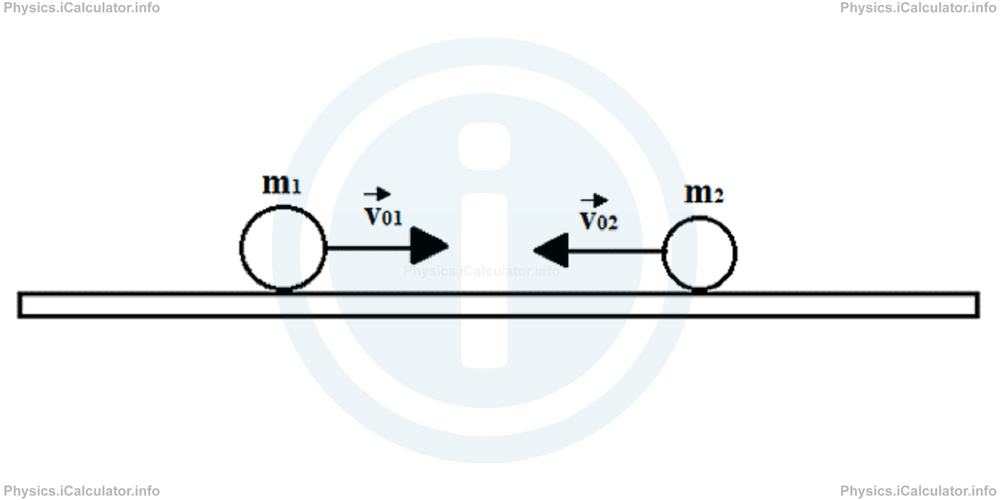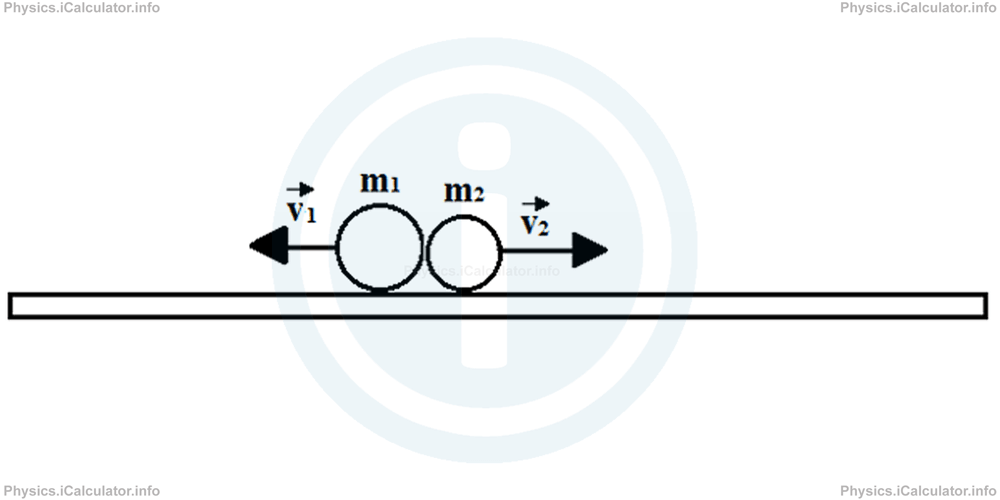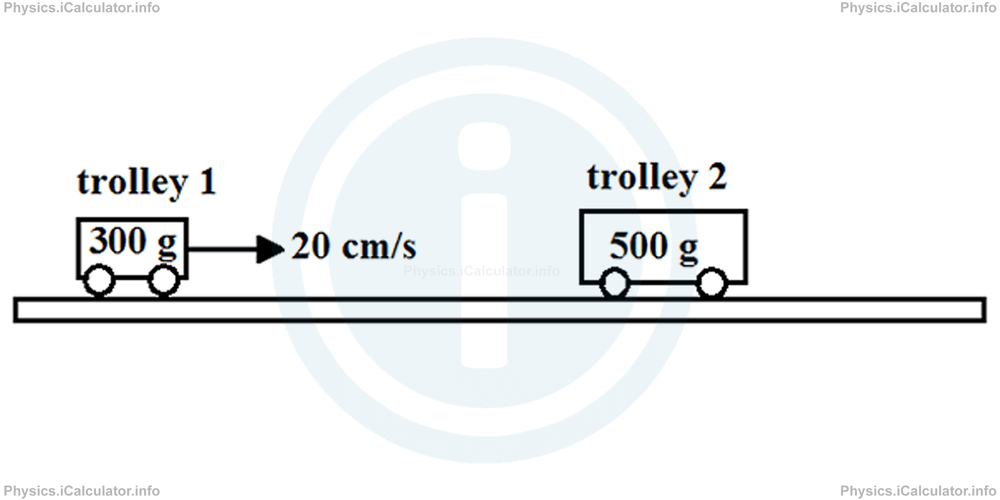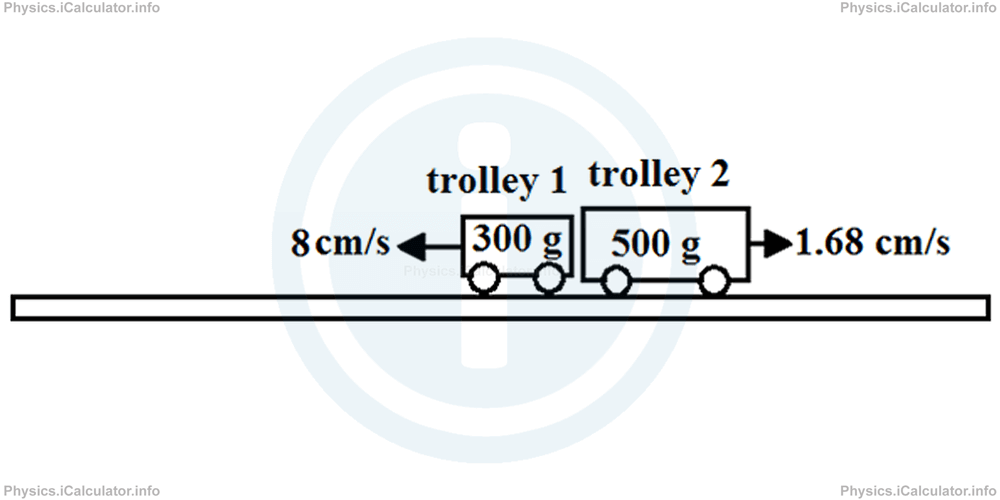Menu
Physics Lesson 6.7.1 - Conservation of Momentum in Elastic Collisions
Please provide a rating, it takes seconds and helps us to keep this resource free for all to use
Welcome to our Physics lesson on Conservation of Momentum in Elastic Collisions, this is the first lesson of our suite of physics lessons covering the topic of Law of Conservation of Momentum and Kinetic Energy, you can find links to the other lessons within this tutorial and access additional physics learning resources below this lesson.
Conservation of Momentum in Elastic Collisions
First, we'd like to state that in this tutorial only head-to-head collisions will be condiered. In these collisions, objects either move in the same directions as they were moving prior to the impact or they move in the opposite direction. No middle ways exist in these cases.
Suppose we have two balls of masses m1 and m2 respectively, moving towards each other at velocities v⃗01 and v⃗02 as shown in the figure.

When the balls collide with each other, they either move in the same or in the opposite direction, depending on the values of masses and velocities, i.e. on the magnitude of momentums. Sometimes, either one or both objects may stop as well. Whatever happens, they will experience a force of collision, which based on the Newton's Third Law of Motion (action-reaction principle), is written as F⃗1 for the first ball while the reaction force of the second ball on the first ball is written as F⃗2, where
Equation 1
F⃗1 = -F⃗2As a result, after the collision, the first ball will have the velocity v⃗1 while the second ball the velocity v⃗2.
The figure below shows the two balls after the head-to-head collision. For illustration purpose, after the collision they are taken as moving in opposite directions as they were moving before the collision, but no matter - they can move in whatever direction; the approach is always the same.

In addition to the change in direction, we don't expect the balls have the same magnitude of velocity as prior to the collison, so the arrows don't have the same lengths as in the first figure.
If we multily both sides of equation (1) by the time interval during which the collision occurs (this time interval is the same for both objects as they both experience the same event), we obtain
or
Equation 2
J⃗1 = -J⃗2From equation (2) it is obvious that impulses are also equal and opposite , just like the forces of interaction between the balls.
In the previous tutorial "Collision and Impulse. Types of Collision", we explained that impulse is equal to the change in momentum ∆p⃗ experienced by an object when it collides with another object. Therefore, we can write the equation (2) as
Equation 3
∆p⃗1 = -∆p⃗2We know that
where p⃗01 and p⃗1 are the initial and final momentums of the first ball, and
where p⃗02 and p⃗2 are the initial and final momentums of the second ball respectively.
Therefore, substituting the above two equations at eq. (3), we obtain
Equation 4
p⃗01 + p⃗02 = p⃗1 + p⃗2The equation (4) is known as the mathematical expression of the Law of Conservation of Momentum. Its says that:
"The total momentum prior to the impact for two objects involved in a collision process is always equal to their total momentum after the impact, regardless the type of collision."
Giving that
p⃗02 = m2 × v⃗02
p⃗1 = m1 × v⃗1
and
we can write the equation (4) as
Equation 5
m1 × v⃗01 + m2 × v⃗02 = m1 × v⃗1 + m2 × v⃗2The equation (5) represents the long form of the equation (4), which is widely used in exercises.
Example 1
A 300 g lab trolley moving at 20 cm/s collides with a 500 g trolley at rest as shown in the figure.

After the head-to-head collision, the first (the small) trolley changes direction and moves due left at 8 cm/s. What is the velcity (including the direction) of the second trolley after the collision?
Solution 1
We can write the following clues based on the info provided in the problem:
m2 = 500 g = 0.5 kg
v01 = 20 cm/s = 0.2 m/s
v02 = 0
v1 = - 8 cm/s = - 0.08 m/s (it is negative as the trolley turns back)
v2 = ?
Applying the equation (5) on conservation of momentum,
we obtain after the substitutions,
0.06 = -0.024 + 0.5 × v⃗2
v⃗2 = 0.06 + 0.024/0.5
= 0.168 m/s
= 1.68 cm/s
The positive result implies that the second trolley moves due right (as expected). Look at the figure:

You have reached the end of Physics lesson 6.7.1 Conservation of Momentum in Elastic Collisions. There are 3 lessons in this physics tutorial covering Law of Conservation of Momentum and Kinetic Energy, you can access all the lessons from this tutorial below.
More Law of Conservation of Momentum and Kinetic Energy Lessons and Learning Resources
Whats next?
Enjoy the "Conservation of Momentum in Elastic Collisions" physics lesson? People who liked the "Law of Conservation of Momentum and Kinetic Energy lesson found the following resources useful:
- Elastic Feedback. Helps other - Leave a rating for this elastic (see below)
- Centre of Mass and Linear Momentum Physics tutorial: Law of Conservation of Momentum and Kinetic Energy. Read the Law of Conservation of Momentum and Kinetic Energy physics tutorial and build your physics knowledge of Centre of Mass and Linear Momentum
- Centre of Mass and Linear Momentum Revision Notes: Law of Conservation of Momentum and Kinetic Energy. Print the notes so you can revise the key points covered in the physics tutorial for Law of Conservation of Momentum and Kinetic Energy
- Centre of Mass and Linear Momentum Practice Questions: Law of Conservation of Momentum and Kinetic Energy. Test and improve your knowledge of Law of Conservation of Momentum and Kinetic Energy with example questins and answers
- Check your calculations for Centre of Mass and Linear Momentum questions with our excellent Centre of Mass and Linear Momentum calculators which contain full equations and calculations clearly displayed line by line. See the Centre of Mass and Linear Momentum Calculators by iCalculator™ below.
- Continuing learning centre of mass and linear momentum - read our next physics tutorial: Momentum and Impulse in Two Dimensions. Explosions.
Help others Learning Physics just like you
Please provide a rating, it takes seconds and helps us to keep this resource free for all to use
We hope you found this Physics lesson "Law of Conservation of Momentum and Kinetic Energy" useful. If you did it would be great if you could spare the time to rate this physics lesson (simply click on the number of stars that match your assessment of this physics learning aide) and/or share on social media, this helps us identify popular tutorials and calculators and expand our free learning resources to support our users around the world have free access to expand their knowledge of physics and other disciplines.